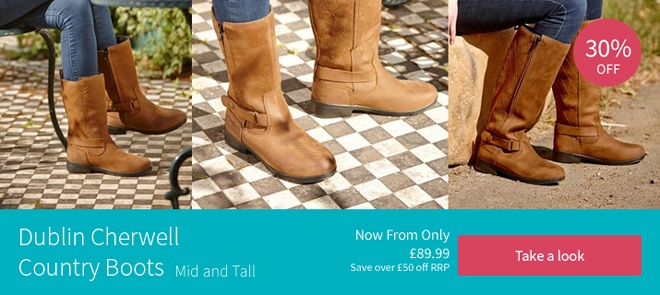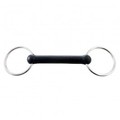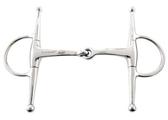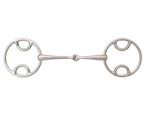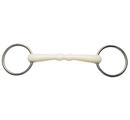When it comes to choosing the right bit for your horse, the abundance of choice can make it difficult to decide. With various classes of bit, each with their own subcategories, and then different mouthpieces and cheeks on top of that, it’s easy to lose sight of what you really need.
The best thing to do is keep it simple and consider what your horse is like to ride, how he carries his head, and his mouth conformation. This should help you narrow down your options and choose the bit that is most suitable. Have a look inside your horse's mouth to see how much space there is - do they have a large tongue? This can affect the amount of space and therefore the type of mouthpiece you use.
Before changing the bit, get your horse’s teeth checked to make sure he’s not in any discomfort, and speak to your riding instructor to see if it’s something that can be resolved by simply adjusting your riding. If not, then you probably do need a change of bit. But which to go for?
Snaffle bits:
These are probably the simplest and most popular starting bits, especially with young or inexperienced horses. Snaffles consist of a mouthpiece that is either straight or jointed, with rings at either end. Their action is fairly mild and they have the effect of bringing the head up and in. Pressure is applied equally on the corners of the mouth, tongue and bars of the lower jaw.
The effect of a simple Snaffle can be adjusted by changing the mouthpiece. A thicker mouthpiece, for example, will reduce the action of the bit and make it milder still. With a Snaffle, the pressure applied by the reins isn’t amplified, and an ounce of pressure applied when pulling back will apply an ounce of pressure to the mouth.
In contrast, an ounce of pressure applied by a Curb bit will apply far more pressure on the horse’s mouth.
Different cheeks:
Loose ring – this slides through the mouthpiece, allowing easy movement. It encourages a relaxed jaw but may pinch the sides of the mouth, necessitating a bit guard.
Eggbutt – this type of cheek keeps the bit stable and prevents rotation. It doesn’t pinch the lips so is tolerated better by some horses.
D-ring – similar to the Eggbutt in that it doesn’t slide around, but with straight sides to help with steering.
Fulmer – again, similar to the D-ring but with much longer sides for greater control and steering. With loose rings either side. These tend to be great bits for young horses as the longer sides give even more help with steering than the Eggbutt.
Hanging cheek (also known as a Baucher) – a fairly fixed bit that offers more braking control and is generally thought to suit more fussy horses that don’t like a lot of tongue pressure. It is believed by many to apply poll pressure but this isn't actually the case.
When trying any new bit for the first time, it is important to be accompanied and ride in an enclosed space while your horse gets used to it, and have someone on the ground assess how your horse is working in it.
It is advisable to change either the bit type or mouthpiece, but not both at the same time. Similarly, start with the mildest option first.
If you found this information helpful, look out for our next article on ‘Curb and Pelham’ bits, including a closer look at the different mouthpiece options available. As always, feel free to post your comments here or send us an email: [email protected] with any questions.
Written by: Hannah

